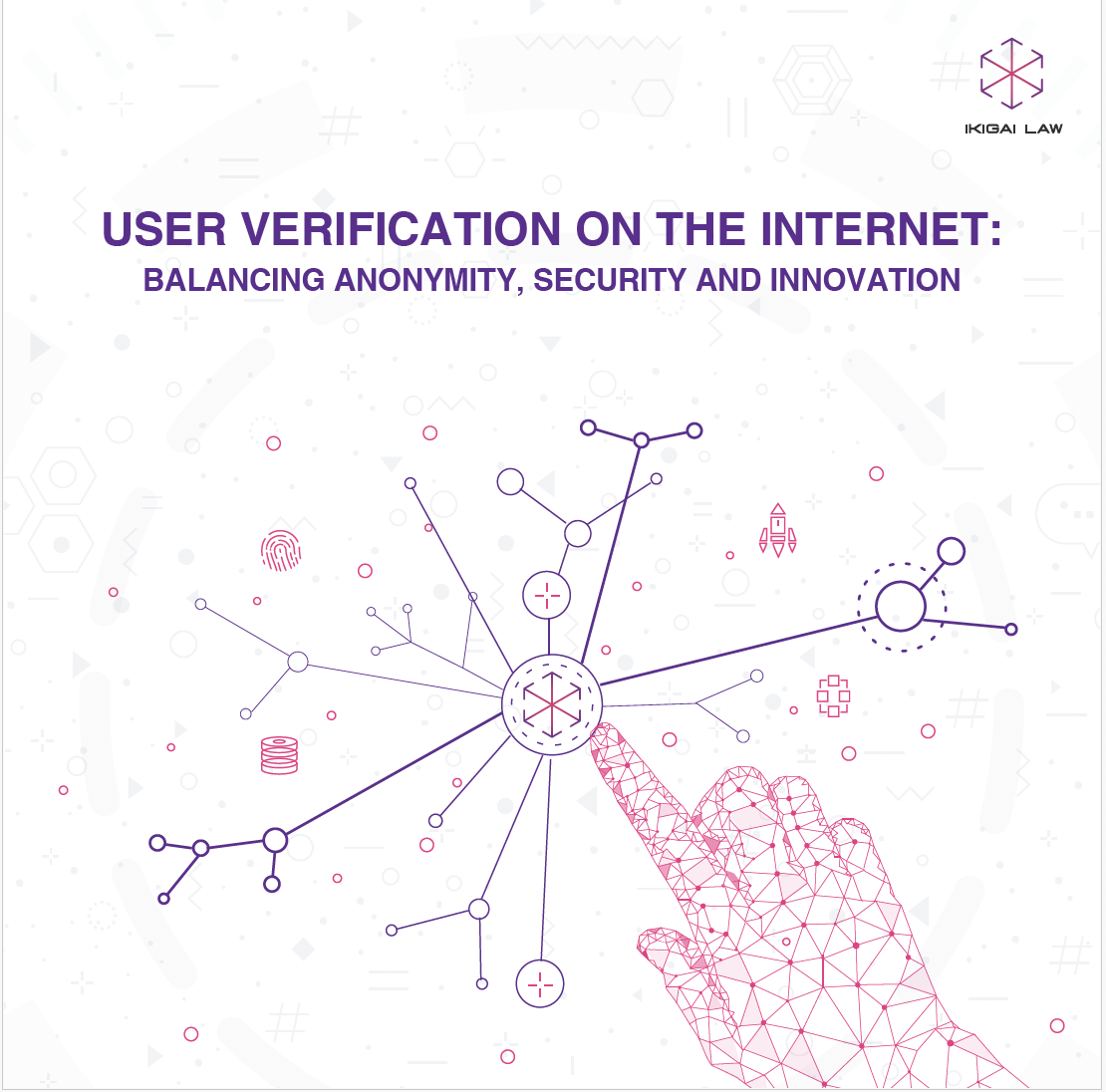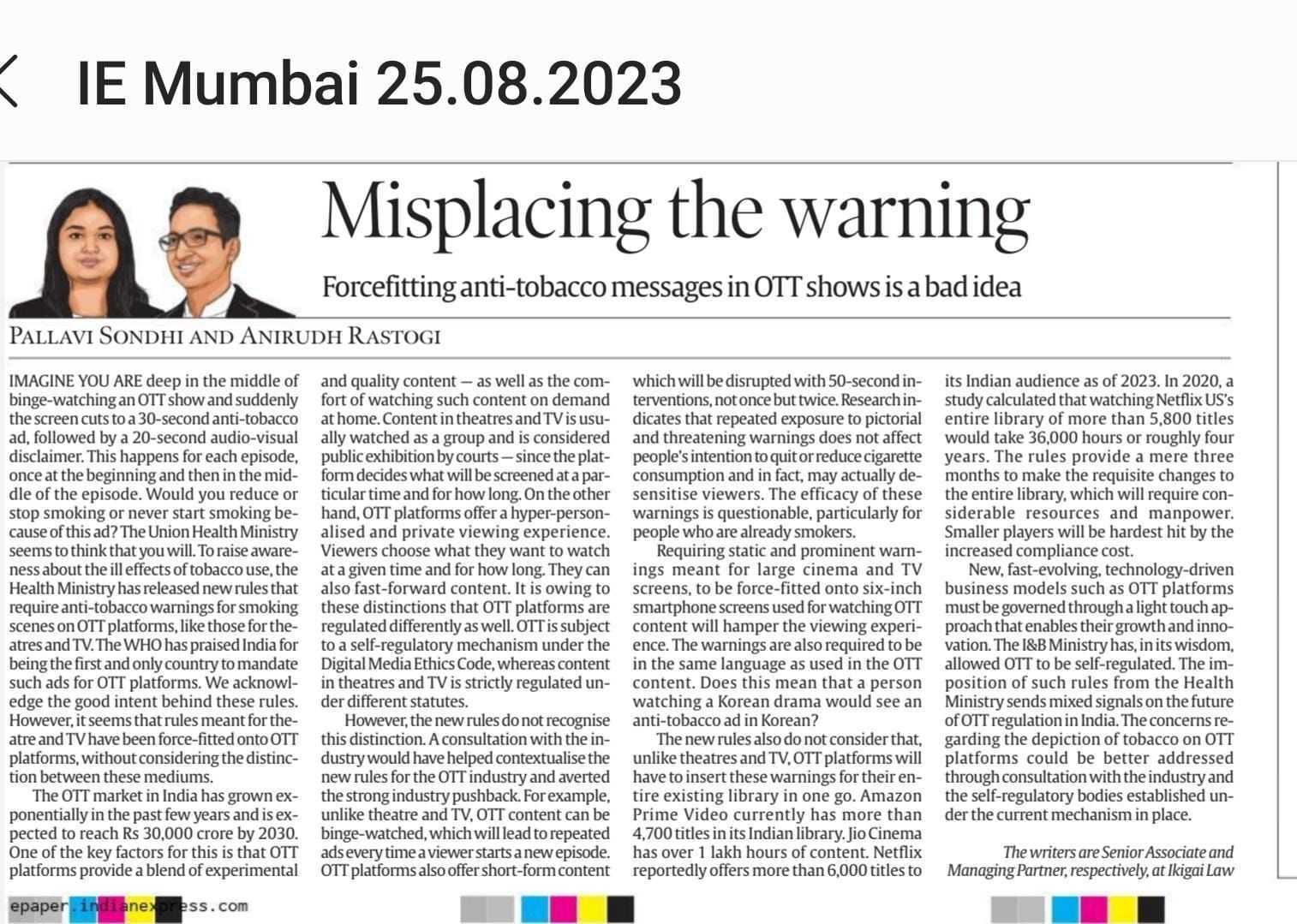New anti-tobacco warning rules for OTTs issued by India’s union health ministry for OTT platforms do not consider the unique nature of OTT content consumption. This article raises questions about the effectiveness of these measures, and suggests that a collaborative approach with the industry and existing self-regulatory mechanisms would be more appropriate.
A longer version of this blog written by Pallavi Sondhi, Senior Associate and Anirudh Rastogi, Managing Partner was first published in The Indian Express and is available here.
Imagine your binge-watching session interrupted by anti-tobacco ads – a new move by India’s Health Ministry. The aim is clear: raise awareness about tobacco’s harms. This is to be achieved with a 30 second anti-tobacco ad, followed by a 20 second audio-visual disclaimer in the beginning and the middle of the show. But does this approach fit the dynamic world of OTT platforms?
OTT platforms have exploded in India, expected to hit INR 30,000 crores by 2030. They offer personalized content and on-demand convenience. A contrast to group-based cinema and TV. Regulations designed for theaters and TV are now being extended to OTT. The rules might be well-intended, but they overlook the uniqueness of OTT and the effectiveness of the proposed measures. A lack of industry consultation and mismatched adaptation have led to pushback.
Binge-watching leads to repeated ads, especially disrupting short-form content. Research questions the effectiveness of such warnings. Repeated anti-tobacco warnings might desensitize viewers rather than prompt change.
Then, static warnings meant for big screens are squeezed into small smartphone displays. Language barriers also surface – imagine an anti-tobacco ad in a foreign language? The rule’s timeline is another hurdle. Further, the rush to insert warnings across massive OTT libraries in a tight timeframe will strain resources and impact smaller players disproportionately.
We argue that the future of fast-evolving models like OTT requires careful regulation. Content in theatres and TV is usually watched as a group and is considered public exhibition by Courts. On the other hand, OTT platforms offer a hyper personalized and private viewing experience. Owing to these distinctions, OTT platforms are regulated differently as well. While OTT platforms are self-regulated under the Digital Media Ethics Code, the Health Ministry’s move raises questions about future regulation. Industry consultation and leveraging existing self-regulatory mechanisms could provide more effective solutions for tobacco depiction on OTT platforms.










